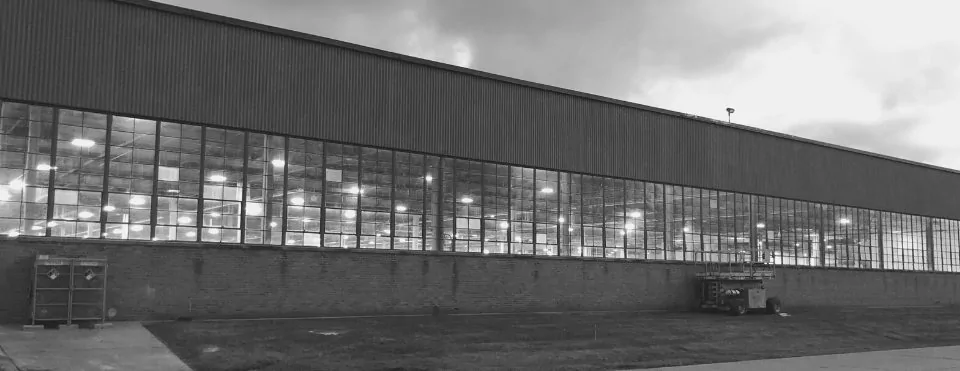Recycling and Waste
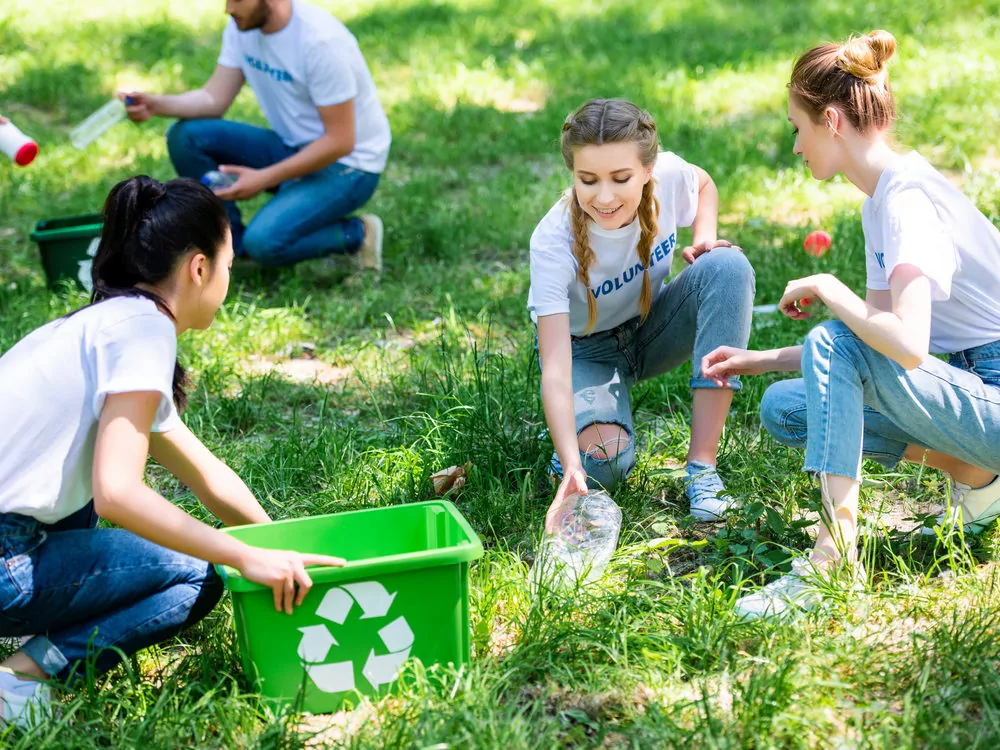
Jun 09 2022
At the heart of our organization, Verde is committed to environmental protection. That is who we are, and what we do. For over a decade, we have been recommending and implementing energy efficiency measures for libraries, fire stations, McDonalds, and everything in between throughout Illinois.
We pay to recycle the fluorescent lights that come out of our customer’s buildings. We do this because they contain mercury – something quite harmful for wildlife, our health, and the ecosystem. While the amount in each light is small – this is an important part of our business and worth the cost.
Initially, we paid to have a service come and pick up cardboard boxes of fluorescent lamps from our clients location. It was clean and convenient, although it was costly at about $.25 per lamp plus an additional pickup fee per location. Even the cardboard boxes were a decent expense because of the need for them to be strong enough to safely transport the hazardous material.
A few years ago, we invested in a bulb crushing machine at our warehouse in Chicago. This machine is safe and easy to use, and contains 4 HEPA filters to remove the mercury as it crushes the glass tubes into a 55 gallon stainless steel drum. We can crush about 100 lamps in 10 minutes and fit approximately 1,500 lamps in one drum. These drums are then sent out to a larger recycling facility that cleans and repurposes the glass.
This process requires our crew to box up the lamps at the job site and bring them back to our warehouse to feed to our bulb-crusher. It requires more time from our team, but it is half the cost of our initial recycling method. 1,500 crushed lamps in a drum takes up far less space and costs less to transport than boxes of uncrushed tubes. We have also been able to cut expenses by being able to reuse the cardboard boxes.
Recycling Other Waste Products
In addition to taking the fluorescent lamps from our customers’ locations, we also remove any old ballasts, wiring, and fixtures. There is a wild array of commodities in there: copper, aluminum, and other ferrous and non ferrous materials. Historically, we had a relationship with a scrapper who would come and pick them up from job sites. He didn’t charge us; his money was made by selling that scrap to local scrap yards.
Since he wasn’t an employee – it was hard to make sure he was there before we completed an install. We started to see a rise in frustrated customers if our coordination was off – if pickup was just a few days after a job wrapped up, that scrap was an eyesore and took up space on the customer’s property.
Around the same time, we noticed that inflation was on the rise and the value of many of the commodities were at all time highs, including copper. So we asked ourselves if there was an opportunity here to change our process.
Processing and Getting Paid for Recycling
We started taking small batches of our scrap to a variety of scrap yards to get a feel for the price we’d receive. While the raw value of copper as a commodity was selling for more than $4 per pound, we would receive $.80 per pound of copper wire and maybe $.15 per pound of ballasts (which also contain copper). We started to collect and store more volume of ballasts, trim the wires by hand, and get a little bit more value with scale. We started collecting the scrap in gaylords, and later switched to larger, IBC containers – mostly driven by our partners recommendations on the best methodology.
I’ve learned that there is a whole ecosystem that is responsible for taking a pound of copper wire or pound of ballast and converting it to a usable recycled product. What started as small entrepreneurs in the depression collecting scrap to feed their families has grown into a multi-billion industry. However, these processes are not always transparent to us, the average consumer.
I heard horror stories from customers and scrap industry folks of people putting wire into barrels and light them on fire with gasoline to remove the plastics on wires and ballasts. I have since learned that while that was true in much of the world 40 years ago, there are processes now that are much more environmentally friendly, either by using cheap human labor or machines that separate these pieces.
I recently read Junkyard Planet by Adam Minter and have learned so much about why, where and how our scrap materials end up either reused, landfilled or recycled. I believe there is a huge opportunity for local entrepreneurs to make a lot of money on recycling – making money while doing good – especially with the future of 3D printing. Recycling had the opportunity to provide inexpensive feed stock for 3D printing, as that technology continues to evolve.
Copper as a Commodity
Copper is the biggest driver of Verde’s recycling efforts, it’s found in every light fixture’s wiring and ballasts. Copper is mined in a few places around the world and has huge environmental costs to mine. It is an ancient metal and the 3rd most recycled metal. The US still uses a ton of copper in our buildings and developing countries like China and Brazil have huge demands for this raw material. Another interesting fact about China – it is incredibly expensive to ship products to the US from China, but cheap to go the other direction since there is such an imbalance of container ships waiting to return. So shipping recycling materials containing copper to China is not only good for the environment, but also helps a huge trade imbalance. The U.S. is considered the Saudi Arabia of scrap, and our waste is filled with wealth.
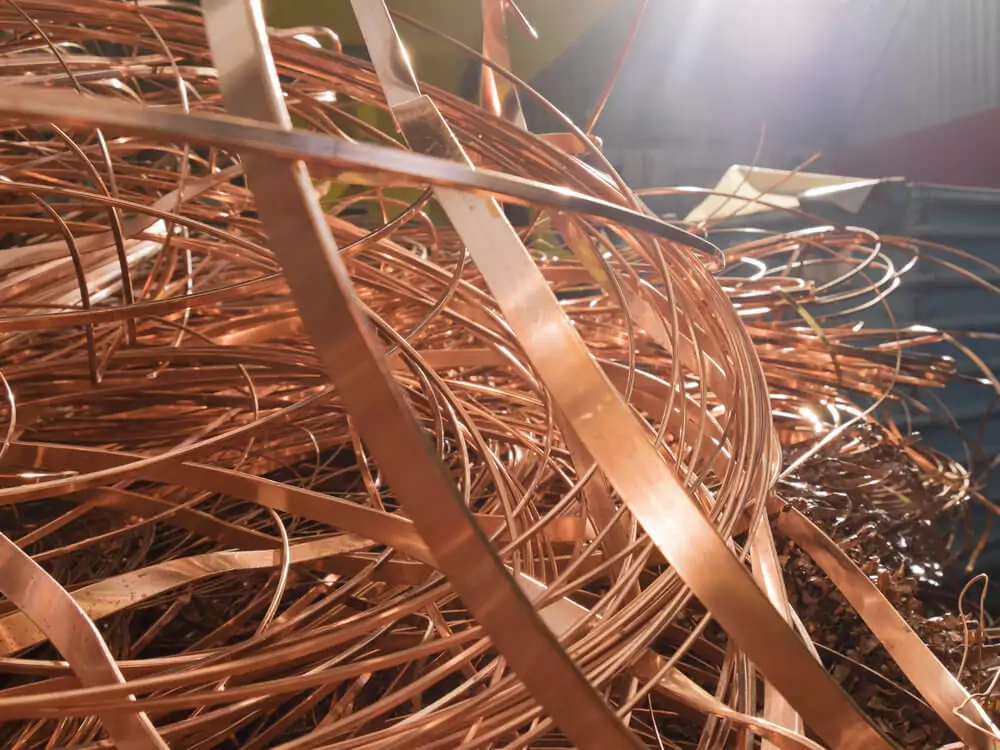
While I envisioned burning barrels of copper wire, what actually happens are huge machines that chop up the insulation and copper wire alike. These machines, located both in the United States and China, then separate the plastic from the copper – plastic having a value on its own, as well. Separating these two materials can be simply done with water by floating the small plastic bits to the top. The copper is then easily converted into a commodity worth $4 per pound, so a huge margin can be made by someone when purchasing for a fraction of that cost.
Can We Bring Our Lamps and Ballasts to Recycle near Chicago?
Yes, you absolutely can do this. We provide this free and included in all of our projects, so getting an assessment done is always the right place to start. But, we can gladly accept old fluorescent lamps and ballasts, as well as almost any kind of HID lamp and transformer as well.
As of August 1, 2024, our costs are as follows:
4ft T5, T8 or T12 lamps : $0.35 each
More than 4ft T8 or T12 lamps : $0.80 each
U-Bend or circular T8 or T12 lamps : $0.60 each
Compact Fluorescent or HID lamps : $0.60 each
Shattershield (Plastic Coating) Fluorescent Recycling : $1.80 each
LED Lamp disposal : $0.50 each
We accept all ballasts at no charge. We use the ballasts and wires as a way to offset some of our costs for recycling, which is why our costs are lower than most facilities. We sell boxes for recycling, either per unit or on a subscription service so you can exchange them when you drop off recycling.
Kyle, our recycling technician, was staffed in partnership with Working Together Chicago. Kyle loves his job, and appreciates and can handle any work you bring our way. We are located at 5328 N Northwest Highway in Chicago and can accept recycling drop offs Monday through Friday, 8am to 3pm. Please call ahead at (773) 413-9587 so we can be prepared for you.
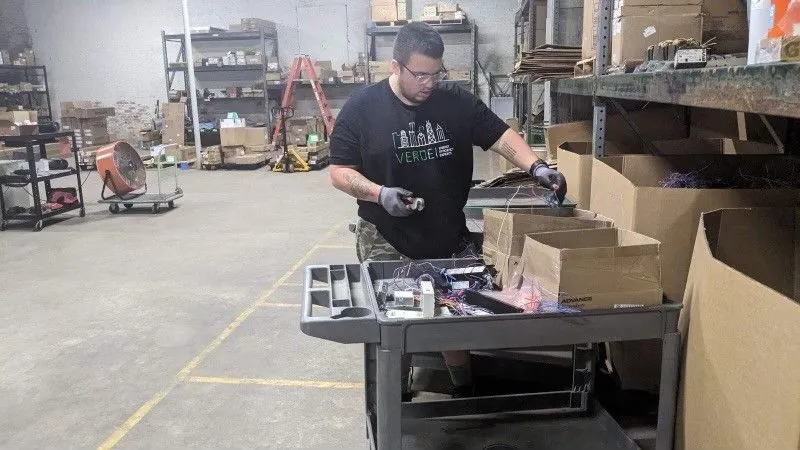
Commodities Other Than Copper
Each lighting fixture can have 5 to 10 different commodities inside of it, from aluminum reflectors to cast iron housings. There are also resistors and capacitors – as well as small plastic components and a lot of screws and fasteners. Some of the more interesting fixtures use aluminum with small flaps to assemble, which is quite efficient and easy to recycle. Others take 20 or 30 different steps to disassemble and I usually only deconstruct those one time out of curiosity.
I have started contacting Argonne National Laboratory and a few other places I know locally to see what recycling machines equipment costs and does. I intend to seek out and attend some trade conferences, even looking for Chinese vendors that will come here and directly purchase our waste at higher rates than US partners.
While the previously empty containers do go back to China, it would be far better to recycle these commodities locally. I’m curious about what creating a local scrap materials process would look like, although I’m sure those processes cost millions of dollars of investment. And while we have started recycling about 10,000 lbs per month – we would need an even bigger scale (or local consortium and private/public partnership) to make that investment worthwhile. I do believe there is an opportunity here, and it will continue if copper and other commodities continue to soar. Where there is a business case, there will be an opportunity that someone will pursue.
In the meantime, we have decreased our costs as a business, and added some profit (and hopefully lower costs to our clients) at the same time. That is worth each ounce of recycled product, especially because it aligns with our mission.
How Can You Tell Different Types of Metals Apart for Recycling?
We separate out different types of metals, because you get more money for recycling when they are sorted. The more granular you get, the more money you can receive. In fact, there are very fancy and complicated machines that separate and sort materials – even entire cars. Since we just have a 20,000 square foot facility, we do most of it by hand for now.
A magnet is an essential tool when identifying metals because it can help you determine which metals are ferrous and which are non-ferrous.
Ferrous metals are magnetic because they contain iron. Some examples of ferrous metals include:
- Alloy Steel
- Carbon Steel
- Cast Iron
- Wrought Iron
Non-ferrous metals are not magnetic and are usually far more malleable than ferrous metals. They are beneficial because they are more rust-resistant due to their lack of iron. Typically, these metals are more valuable and easier for us to spend the time and effort recycling. And lucky for us, a lot of old lighting fixtures and components are aluminum and copper. Some examples of non-ferrous metals are:
- Aluminum
- Copper
- Lead
Why Should I Recycling Fluorescent Lamps in Illinois?
There are two main reasons why you should recycle fluorescent lamps in Illinois.
1. Environmental Protection: Fluorescent lamps, including compact fluorescent lamps (CFLs), contain small amounts of mercury, a toxic metal. When these lamps break or are thrown away in landfills, the mercury can escape into the environment. This can contaminate the air, water, and soil, posing a risk to human and animal health. Recycling ensures the mercury is safely captured and processed, preventing environmental harm.
While a few lamps is not a big deal in the big scheme of things, the EPA reports that 670 million lamps are disposed of each year in the United States. That is a lot of mercury, and when not recycled, can really screw up our natural areas and our health.
2. Law and Regulations: While not mandatory for residents, recycling fluorescent lamps is highly recommended by the Illinois Environmental Protection Agency (IEPA) and required for many facilities throughout the state. This is because the IEPA recognizes the potential environmental risks associated with improper disposal. By choosing to recycle, you’re not only protecting the environment but also complying with state regulations. If you participate in the Commonwealth Edison Energy Efficiency Program – it is a requirement to properly dispose of and recycle your fluorescent lamps when you claim incentive. So you should do it, and you may have to do it.
Here are some additional benefits of recycling fluorescent lamps in Illinois:
- Resource Conservation: Recycling allows valuable materials like glass and phosphors to be recovered and reused in new products, reducing the need for virgin materials and conserving resources. Verde recycles about 10,000 lamps per quarter, so a lot of glass is getting reused along with reducing mercury impact.
- Energy Savings: Recycling uses less energy than manufacturing new lamps from scratch, further contributing to environmental sustainability.
- Cost Savings: Some communities offer free or discounted recycling programs for fluorescent lamps, saving you money compared to disposal fees associated with landfills.
Remember, even though throwing away a single lamp might seem insignificant, responsible disposal practices collectively make a big difference for the environment. By choosing to recycle your fluorescent lamps in Illinois, you’re actively contributing to a cleaner and healthier planet. When you combine this with the added value of recycling old ballasts and wires, this is a great combination for the planet and your pocketbook.
Featured Posts
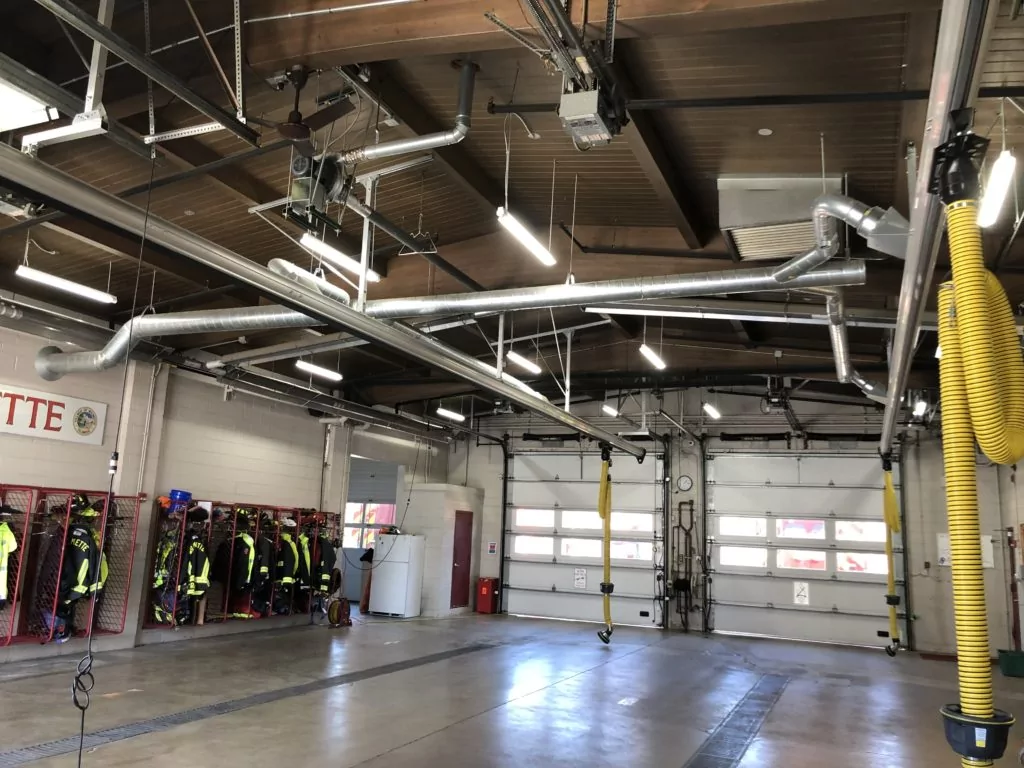
Mar 15 2021
Energy Savings Formula
In 2002, I became a firefighter in the north suburbs of Chicago. I was young and idealistic - loving almost every part of the job. However, I had another secret passion - sustainability. In addition…
Continue Reading >

May 02 2019
Verde Energy Efficiency Experts 10 Most Sustainable Companies in Chicago
In our energy efficiency consulting firm, we constantly look for inspiration from local companies that lead and innovate in clean energy and sustainability. Not all companies have billion dollar budgets, but that doesn’t mean that…

